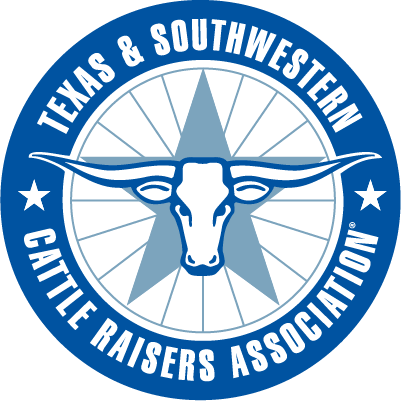by Dave Mowitz for Successful Farming | 5-8-19
Recently, I was interviewing Luke Sullivan with Sullivan Auctioneers about values of a Peterbilt 386 that was in the line at their spring consignment sale. “Semitrucks like that (this was a farmer-owned vehicle) are like currency,” he observed, explaining how solid their values are regardless of the farm economy.
The same can be said about late-model round balers these days.
Proof of this can be seen in the Pocket Price Guide.
For example, take a look at the Deere 569 listings. Of the 18 balers listed from 11 different states, their price spread was less than $12,000. That spread can be accounted for by differences in options alone.
The Pocket Price Guide was generated based on 5×6-foot balers (more popular in the Midwest) on dealers’ lots. Yet, similar price spreads exist for 4×5 balers, as well (more popular in the South and with commercial hay producers needing to transport bales).
Overall, the value of late-model round balers in the last year has remained steady even despite downward pressure being applied by the massive number of farmer retirement auctions that took place this past winter.
TIME YOU BUY
Another big influence on round baler values is the time of season you purchase these machines. As you might have guessed, May marks seasonal highs in late-model prices.
“It’s one of those pieces of used equipment that producers often wait until just before the haying starts to buy, and that drives up their prices at auction,” observes Scott Cook of Cook Auction. “Large square balers (mostly used by commercial hay producers) are different in that regard, as they often trade hands at the end of the hay season.”
The same can be said about balers sitting on dealers’ lots, although the advantage of waiting until just before the season is that the trade-in value of your existing baler will be higher, as well.
OPTIONS IMPACT
The higher prices listed in the Pocket Price Guide often reflect how well equipped a baler is. For example, premium, special crop, or silage special balers sell for 15% to 25% or more. Other accessories that add value include a bale push bar, hydraulic pickup, high-flotation 10-ply tires, corner wrapping, and variable pressure systems that adjust bale density.
However, other accessories such as mega or extra-wide pickup heads have become so common that it’s a challenge to find a baler that doesn’t offer this feature. Based on their popularity, I predict that the extra-wide pickups will become standard equipment on balers in the near future.
BALE PRODUCTION
Yet, the most consistent factor that influences a baler’s value (when comparing balers with similar options and accessories) is its bale production. Whether that baler sells at auction or on a dealer’s lot, how much hay it has consumed sets its base price, as it is a guaranteed predictor of the repair costs you will inherit. Yet, I’m amazed by how few balers in the Pocket Price Guide were listed with their bale production.
Sellers wouldn’t think of listing a tractor, combine, or truck without revealing how many hours they have on their tach, for example. Yet, sellers often fail to list baler use by baler count even though every baler built since the 1990s is equipped with at least a manual counter, and most late-model balers have electronic accounting. A tremendous number of round and square balers are either being discovered or actually purchased online. Farmers in a hurry but still wanting a good deal can search for easily transported items like balers online. When searching online, they simply don’t want to have to take the time to call a dozen dealers for baler counts.
Because this is the time of year when farmers are also looking to upgrade mower conditioners, I also did a price analysis of John Deere 946s (that company’s center pivoting 13-foot mower).
2014 models
- Price average: $23,200
- Price range: $19,900 to $28,000
2015 models
- Price average: $27,100
- Price range: $20,000 to $27,100
2016 models
- Price average: $28,600
- Sales range: $20,000 to $28,600
CRUCIAL INSPECTION POINTERS WHEN BUYING A USED ROUND BALER
Carriage bolts inside a round baler offer a sure sign of a round baler’s use, reveals Scott Cook. He should know.
Besides auctioning equipment for Cook Auction, he travels the country buying equipment for prospective customers. The considerable experience he’s accumulated has taught Cook to examine the carriage bolts and to check the bale counter to confirm baler usage. “It’s a trade secret. I go to the front of the baler, pull back the belts, and check the bolt heads. If they’re worn thin, that baler has seen a lot of use,” he says.
Here are five other round baler inspection pointers Cook offers.
- Belts. “Gauging wear is the first thing I do, as it’s a good indication of baler use.” For good reason, as a ready-made set of replacement belts can set you back $1,500 to $2,000.
- Pickup. “Examine the pickup looking for missing teeth. Again, this reveals how much a baler has been used. The pickup is subjected to the most abuse and indicates how it was cared for,” he says.
- Chain and sprockets. These obvious wear points greatly affect baler performance. When checking sprockets, look for cupping on the wear side of the teeth.
- Tires. Examine tires for damage (cuts, sidewall splitting, or cracking) and for wear.
- Overall condition. “Walk around the baler and look at its overall shape and operating damage. I prefer shedded balers, as this shows care on the owner’s part. You can have more bearing problems with balers that sat outside,” he says.
Read more about Hay and Forage or Machinery Insider
Read the full article at https://www.agriculture.com/machinery/hay-and-forage-equipment/are-there-deals-on-late-model-balers
